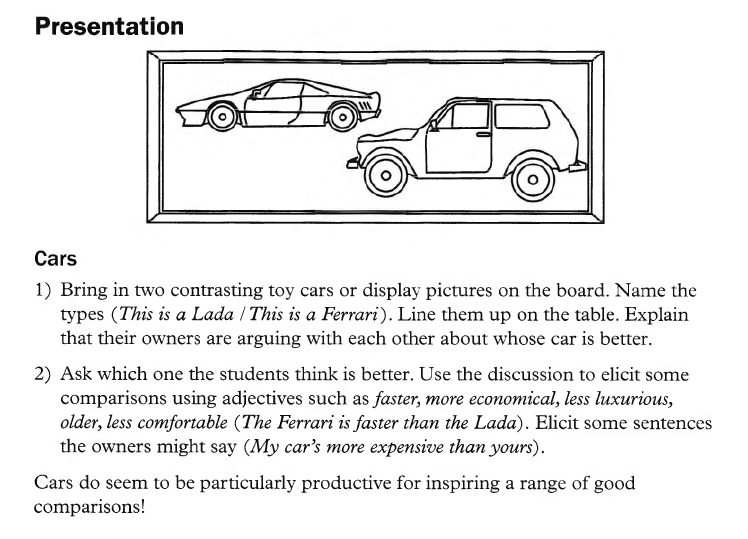A long time ago teachers used to put down grammar rules on the board without any introduction. This approach proved to be ineffective since it doesn’t involve critical thinking and prediction skills. Grammar should be presented in three ways:
- through a text
- through a situation
- test
In this article let’s consider the presentation of grammar structures through a situation.
In most of the coursebooks, grammar is presented through texts and contains ready-made ideas. However, some teachers want to be more creative and to personalize their explanations. So they resort to learning grammar through situations. In this case, a teacher is upfront introducing new language by telling a story and using some photos or drawing pictures on the board. The story does not only involves learners but also helps to clarify the meaning of grammar items and demonstrates how they are used in real life.
Telling stories is really engaging and especially if it is about a teacher. Learners are eager to know more about their teacher. And if you use text-based presentation, some variety will do you good.
Some examples of short presentations.
Example 1
The task is to present Present Continuous for future arrangements. You can use this situation:
‘I had a friend Denis at school. Here is his photo.

But after leaving school, he moved to Spain. We stayed in touch by phoning or texting. Recently, he has texted me that he is coming to my city next month. He’s arriving on March,18 and I’m meeting him at the airport. Denis is staying at my place. He wants to go sightseeing. I think we’re going to have a great time’.
Ask your students:
Where is Denis now? (in Spain)
Will he come to my city in the future? (yes)
When? (on May, 18, next month)
Do we have the arrangement to meet? (yes)
So we use am/is/are+ Ving to talk about events in future that have been already arranged.
Example 2
The task is to present Third Conditional to talk about regrets.
‘Look at the picture. What is it? (a sign). What does it prohibit to do? (to do a U-turn). Where can you see it? (on the road).
My husband and I were driving yesterday and we didn’t see this sign because he was talking on my mobile. We were fined by the police. It was illegal to do a U-turn on that road. So we weren’t attentive. If we hadn’t done a U-turn, we wouldn’t have been fined’.
Write this structure on the board and elicit more Third conditional sentences:
If your husband had been attentive, he would have seen the sign.
If your husband hadn’t been talking on the phone, he would have been more attentive’.
Then ask some concept checking questions to help students analyze the structure, its meaning and its form.
Situations should be:
- personal or impersonal;
- true or invented;
- engaging;
- supported by visuals;
- contain sufficient examples of target vocabulary.
Many ready-to-use presentations ideas you can find in Teaching English Grammar by Jim Scrivener. For example, The comparatives
 You can make this presentation personalized by saying that these cars belong to your friend Peter and your friend George.
You can make this presentation personalized by saying that these cars belong to your friend Peter and your friend George.






 Вероника Аветисян
Вероника Аветисян 
 Маргарита Аветисян
Маргарита Аветисян 


